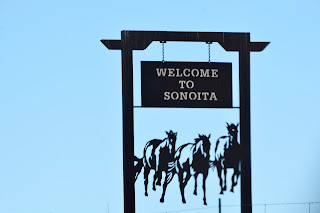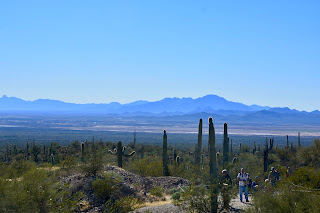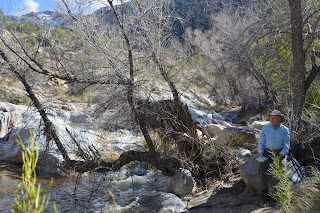Home to cacti, coyotes and palm-sized humming-birds, the Arizona-Sonora Desert Museum is one part zoo, one part botanical garden and one part museum. Desert animals, from javelina to coyote inhabit natural enclosures. We were most interested in the desert plants and opted to join a docent-led "orientation" to the desert. Read more at -
https://www.desertmuseum.org
While we were waiting for our tour to begin, other docents were highlighting a desert constrictor and a kangaroo mouse.
Meet Gary, our docent. He told us he spent many years in Alaska doing something with large animals, but now that he is in Arizona, it's the flora and desert plants that "sing" to him. We were glad because that is just what we were interested in, too.
I didn't take ay pictures of the cacti and other plants Gary talked about because I was too interested in what he had to say and we also bought two heavily illustrated books on cacti in the gift shop. As we have found out in the past, the more you know about the plants and animals in your surroundings, the more interesting the hiking can be. In fact, just walking through the campground this evening, Frederick identified many creosote trees that we had never noticed before.
But there are desert animals at the Museum who live, according to Gary, in the second most lauded natural environments for captive animals.
Strawberry, the bear.
Duke, a Mexican wolf.
At an overview at the Museum Gary talked a bit about the geology of the area and the use of water. The picture above also shows people walking the 1/2-mile desert loop trail. (Gary wore a big button that read "Lets Talk Climate Change".)
There was a large enclosure for coyotes - maybe two acres or more - but the animals were all sleeping under trees or rocks so I opted for a picture of one of the sculptures.
In the last few days we have heard about javelinas and Frederick was particularly interested in seeing one. Although they look something like a pig, they are only distantly related.
They sure look like pigs to me!
Can you see the bobcat? (He is much easier to see if you click on the picture to enlarge it.)
We were very fortunate to see the local ocelot. Usually this cat hides out in its enclosure.
There are two walk-through aviaries, one devoted just to hummingbirds.
If you enlarge the picture you can just make out the rapidly fluttering wings.


















































